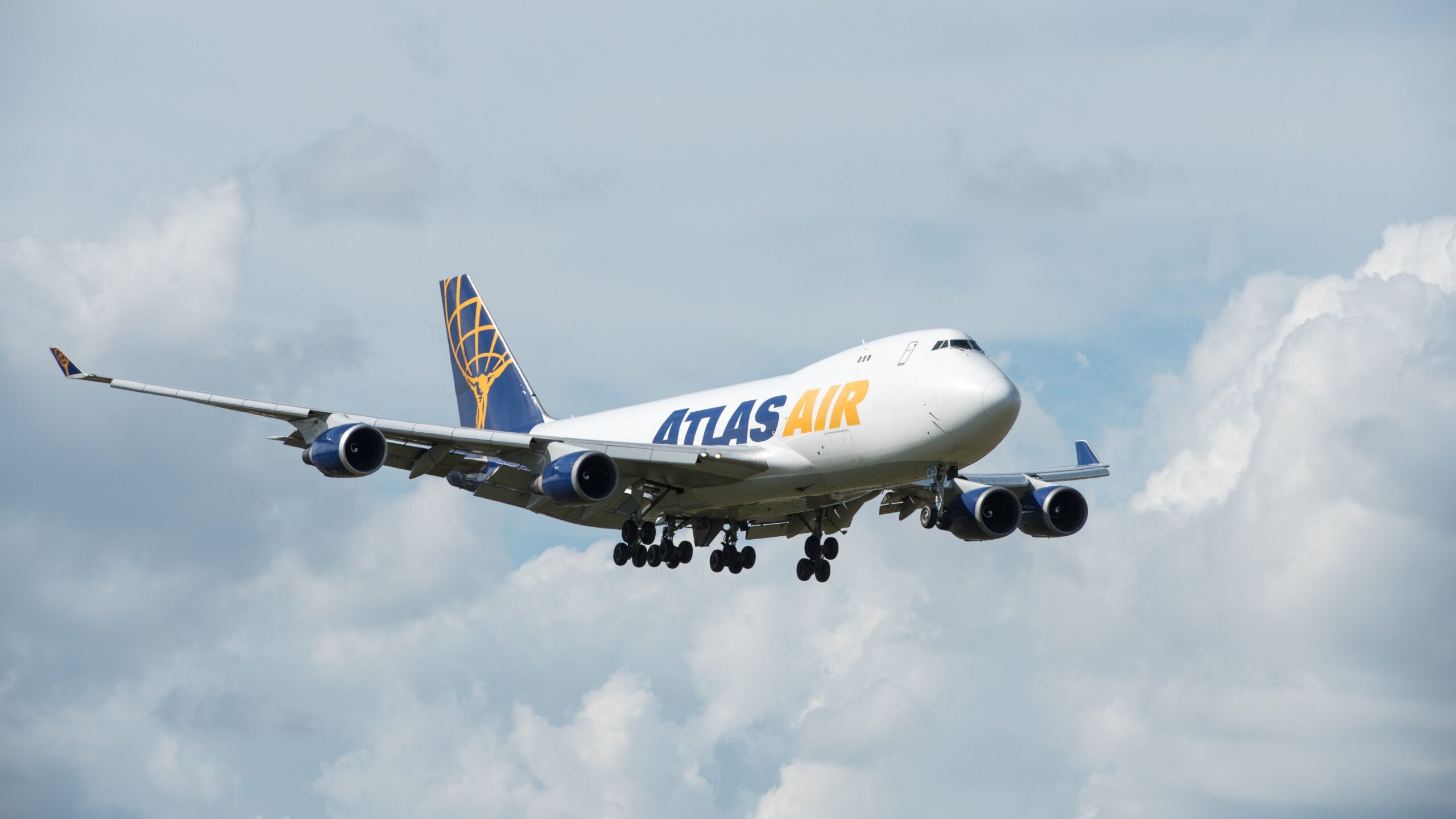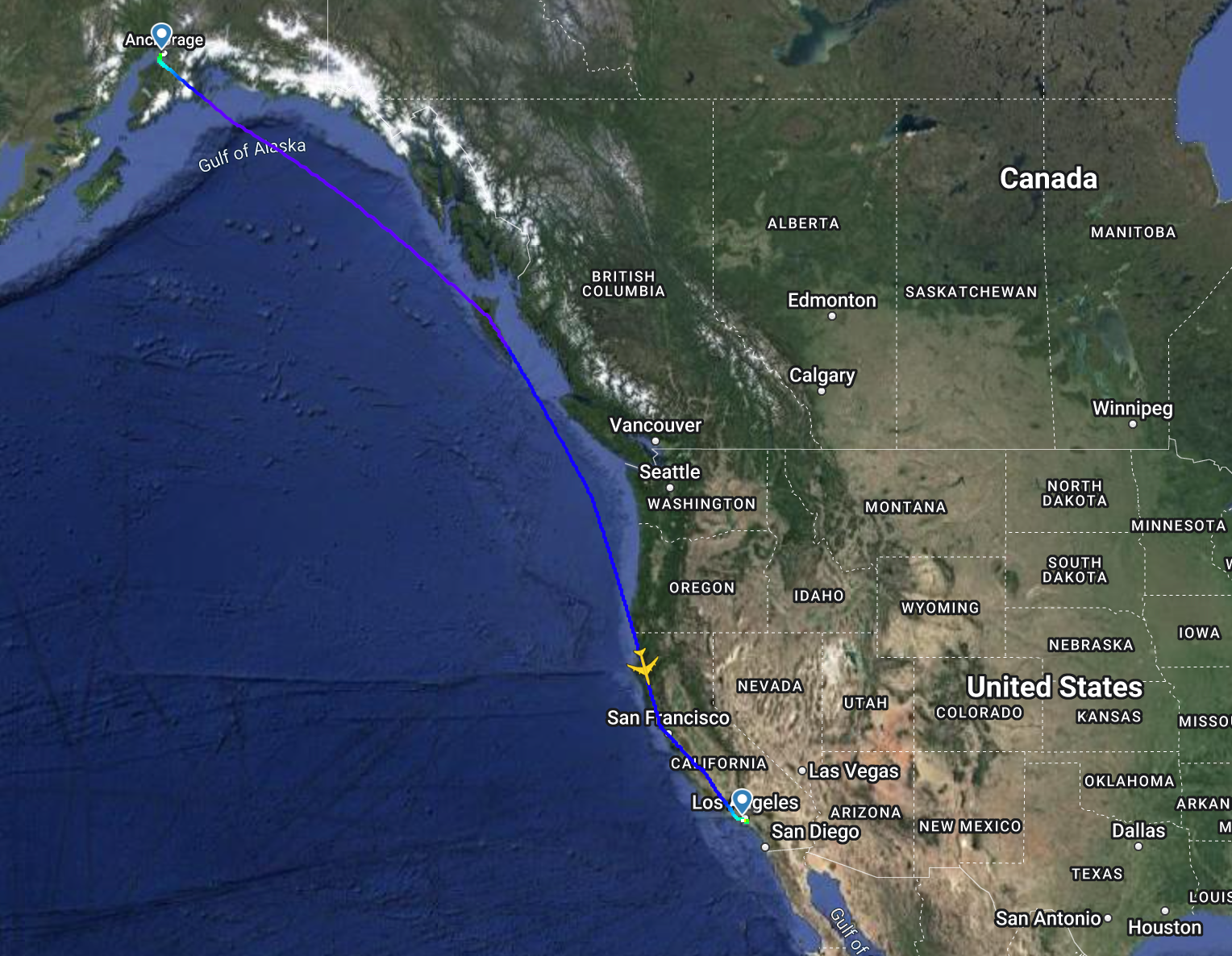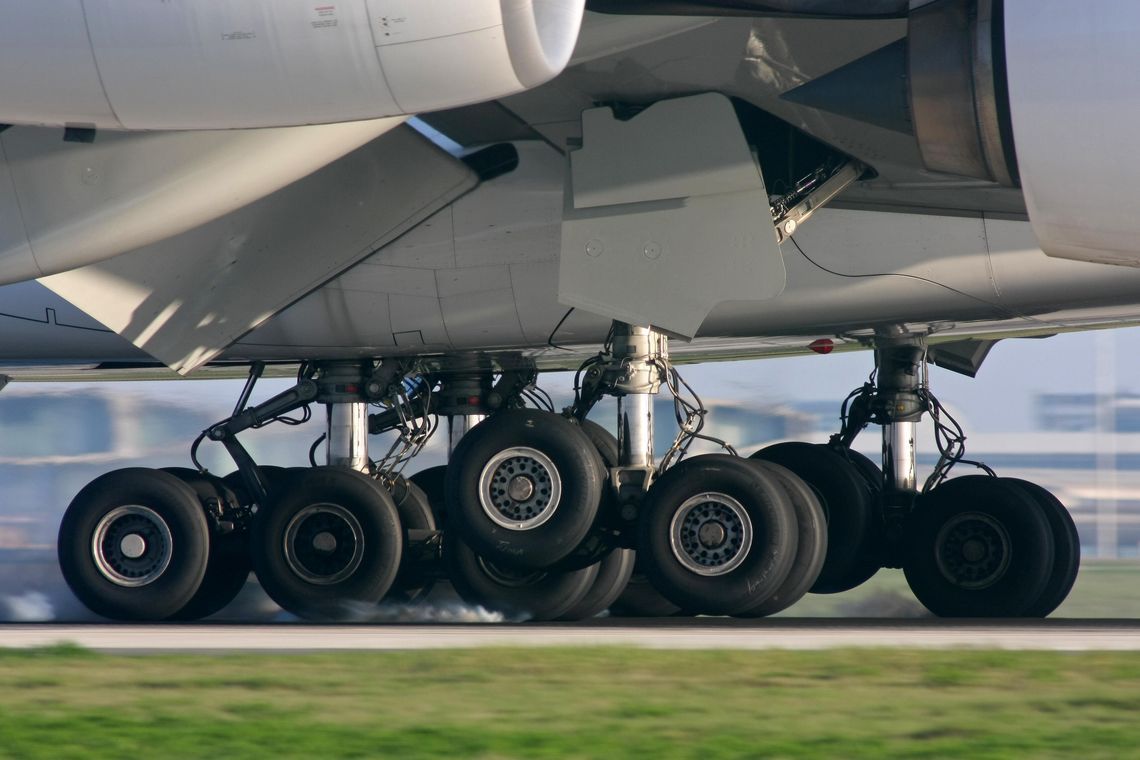Summary
- An Atlas Air Boeing 747-400F made an emergency landing at Los Angeles International Airport due to a blown tire.
- The aircraft was headed from Alaska to Mexico.
- Aircraft tire blowouts usually happen during takeoffs due to heavier fuel load.
A Boeing 747-400 freighter operated by charter airline Atlas Air made an emergency landing at Los Angeles International Airport (LAX) on Sunday. The aircraft touched down safely after the flight crew reported a blown tire.
Once on the ground, the cargo jet reportedly exited the runway and taxied independently to the airport’s cargo area. The aircraft is more than 30 years old and has 18 tires, among the most on a commercial jet.
Caught on camera
John Schreiber, a photojournalist at CBS Los Angeles, caught video of the incident. It shows the aircraft approaching the runway with the rubber from the blown tire hanging off from the wheel. Then, the plane gently comes in contact with the runway and taxis slowly on the tarmac.
As a precaution, LAX Fire Department officials met the aircraft as it exited the runway. The plane, which appears to be registered as N429MC, had arrived from Ted Stevens Anchorage International Airport (ANC). According to data from FlightAware, it was operating as GTI8350 from ANC to Felipe Ángeles International Airport (NLU) in Santa Lucía, Mexico. The aircraft pushed back at 10:07 and was airborne at 10:29. It took off from runway 25R and immediately turned southeast. It continued to climb in altitude, reaching 30,000 feet over the Gulf of Alaska.
Flight path
30 minutes after takeoff, N429MC, had reached 33,000 feet. It continued to travel down the west coast of Canada for more than an hour, flying at about 560 miles per hour. It is unclear when the tire may have burst, but a dramatic change in the flight’s data suggests when it may have happened. At around 11:45, the aircraft descended about 6,000 feet over a three-minute period. During its descent, its speed decreased slightly, but then regained speed. The 747 remained at 27,000 feet for the next two hours before beginning its initial descent to LAX.
Photo: Flightradar24
At around 15:45 PST, the plane began its descent and decreased its speed as it continued south toward the LA metro area. It followed the standard approach flight path for aircraft coming from that direction, which involves passing LAX to the north and then circling back around for a west approach. However, instead of flying directly east, N429MC flew southwest, and then turned around to the north, and then finally east to line up with Runway 25L. It landed safely at 16:08, according to FlightAware.
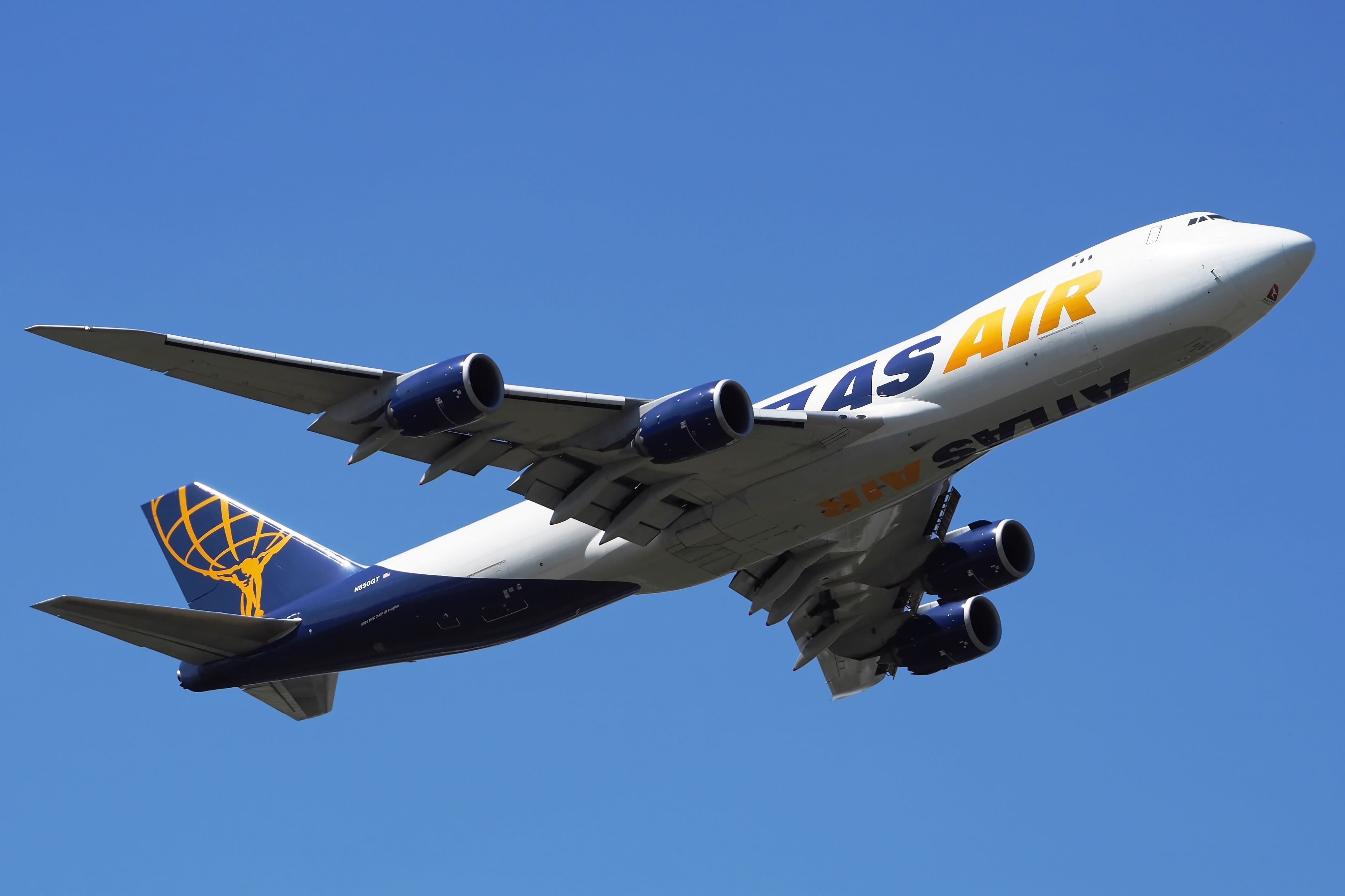
You Might Also Like
Atlas Air Boeing 747-8 Returns To Miami After Flames Seen From Engine
According to ATC archives, the pilots called Mayday, telling the controller that the aircraft’s engine was on fire.
The aircraft remains on the ground at LAX, and it is unclear when it could return to service. Simple Flying contacted Atlas Air for comment on the incident, but a representative could not be reached. According to Planespotters.net, N429MC is a 33-year-old 747. The jumbojet began its life in 1990 as a passenger airliner with All Nippon Airways (ANA). In 2008, it underwent a freighter conversion and was delivered to Atlas Air, supporting the carrier’s global cargo operation.
Strong design
Aircraft tires are designed to handle immense force and perform without issue in any environment. A typical tire can sustain a load of about 76,000 pounds (38 tons), according to Wired. It can meet the ground around 500 times before a retread is required, which can happen about seven times before it needs to be replaced.
Photo: Michelin
Aircraft tire blowouts are more common during takeoffs than landings due to the plane being heavier with fuel at the beginning of the flight. Thus, N429MC’s incident could have also occurred during its departure from ANC.
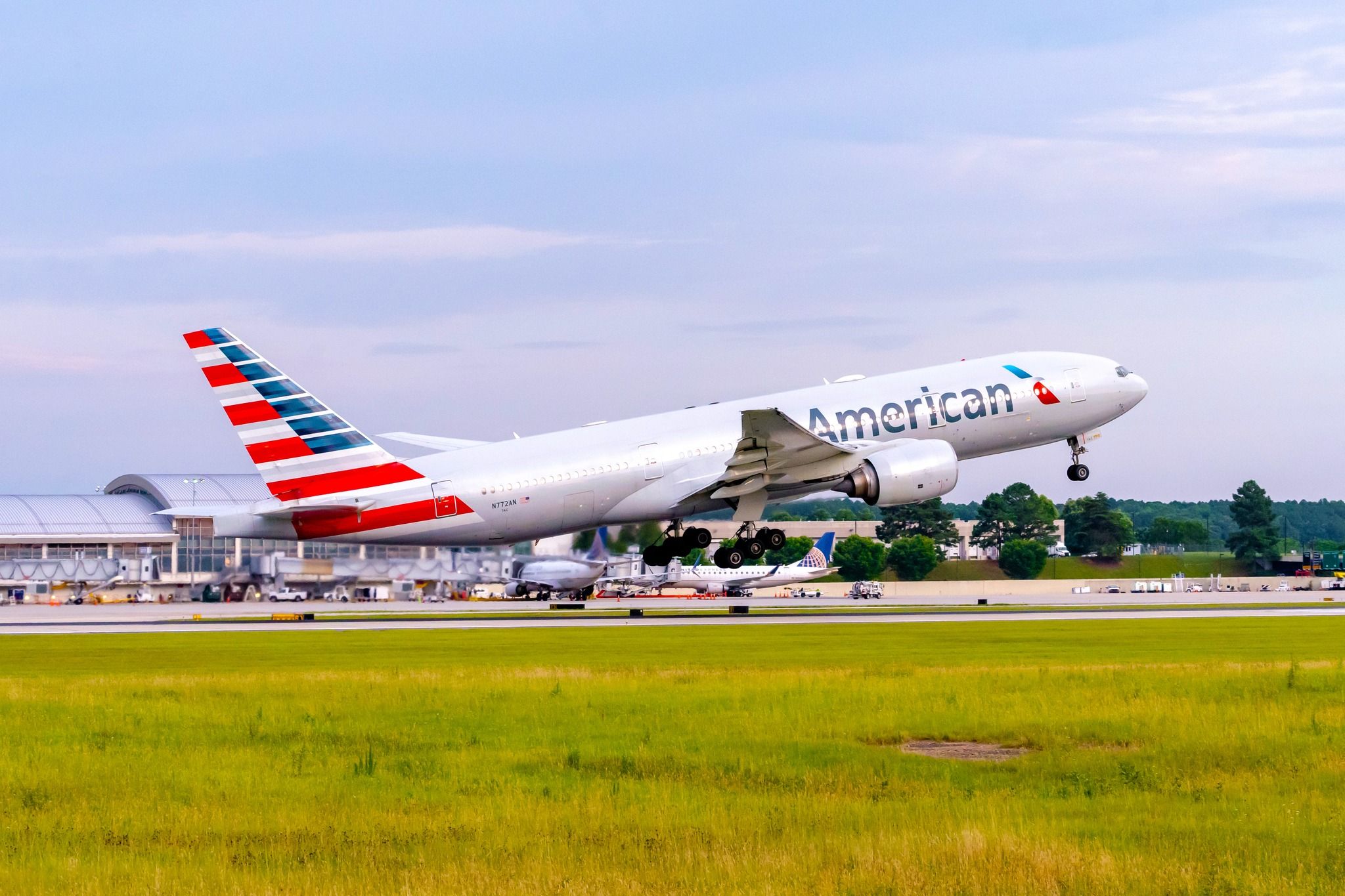
Up Next
No More Widebodies? American Airlines Will Remove Boeing 777 & 787 Dreamliner Flights Between Miami And Los Angeles
There is no date on when the larger aircraft could return to the route.

